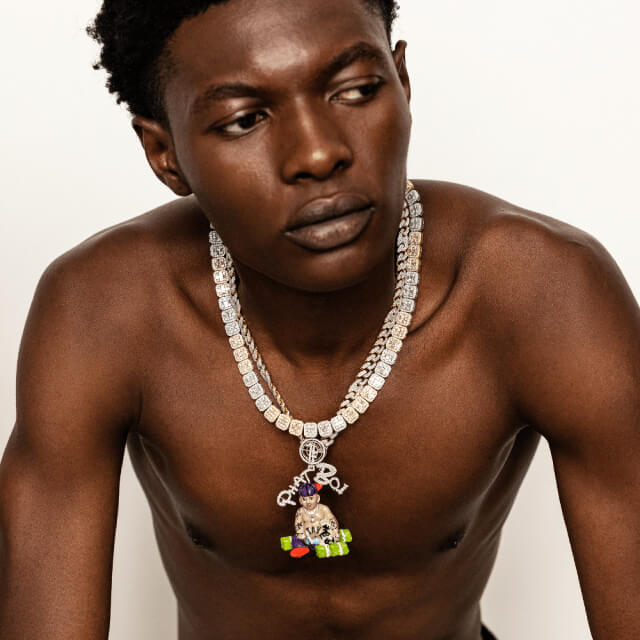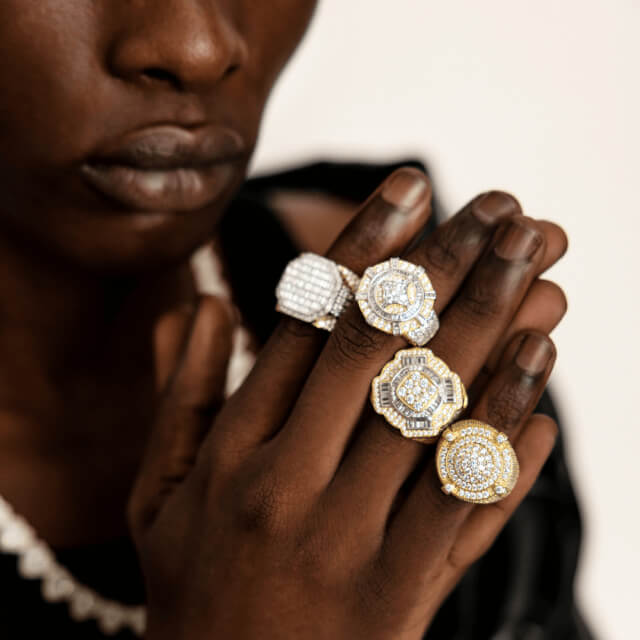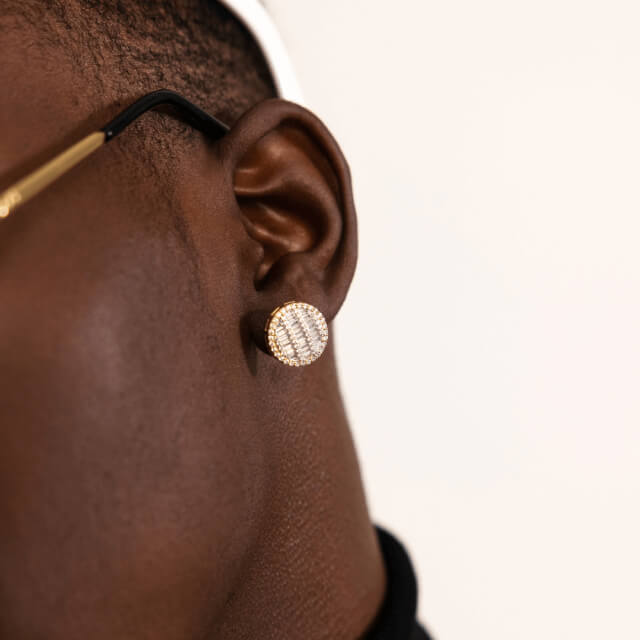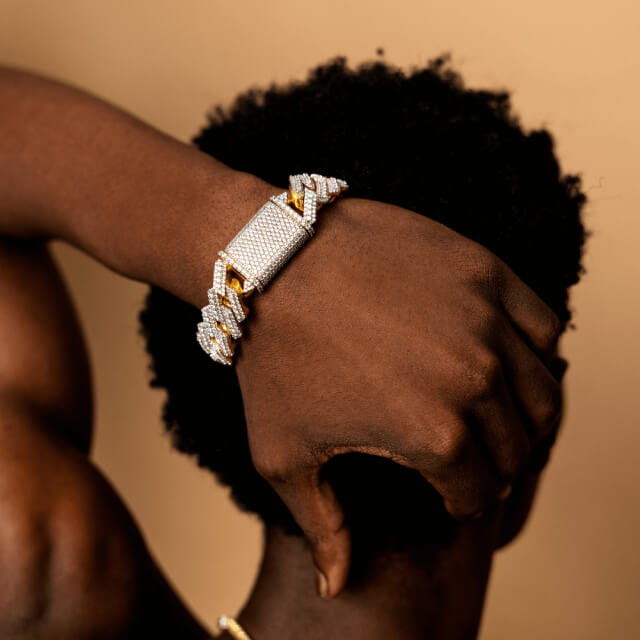Permanent Jewelry: What is it? Types, Price, Benefits & More
Love for jewelry is permanent. So, why cannot jewelry be permanent?
Yes, you read that right. We are talking about permanent jewelry!
The process of implanting jewelry into the skin to create a permanent ornament is known as permanent jewelry. It is also known as welded, flash, fused, or infinity jewelry.
Permanent jewelry is intended to be worn permanently instead of typical jewelry, which is frequently taken off and replaced. Though it can sound risky in the beginning, it makes a distinctive and long-lasting statement!
Recently, the idea of permanent jewelry has become more well-liked as a means for people to express their uniqueness and develop a distinctive appearance. This article will thoroughly review the many categories of permanent jewelry, the special factors to take into account while choosing and maintaining these categories of jewelry, and the advantages and hazards related to wearing permanent jewelry!
3 Types of Permanent Jewelry
We know you like options. And that’s where types of permanent jewelry can sound fascinating. To begin with, permanent jewelry comes in various forms, each with its own special characteristics and factors to consider. Here are the 3 types of permanent jewelry which are very popular.
1. Microdermal Implants
Surface anchors are another name for micro dermal implants, which involve placing a small piece of jewelry just below the skin's surface. The post of the jewelry is put into the dermis layer, while the base of the jewelry rests on the skin's surface. Although micro dermal implants can be positioned anywhere on the body, the face, chest, and back are where they are most frequently found.

2. Dermal Anchors
Although they differ in style from micro dermal implants, dermal anchors are similar. Typically, they are tiny, flat plates with a post that is embedded in the skin. The plate creates a stable anchor point for the jewelry, which rests on the skin's surface and holds the post in place. Dermal anchors can be positioned in a number of places, including the chest, back, and face.

3. Subdermal Implants
A more intrusive form of permanent jewelry, subdermal implants include implanting jewelry just below the skin's surface. In this, a pocket is made beneath the skin, and the jewelry is often implanted as a flat disc or another compact shape. Although subdermal implants can be positioned anywhere on the body, the chest and back are where they are most frequently seen.

As of now, you must be clear about what type of permanent jewelry excites you the most. But, just like temporary jewelry or diamond emerald designs, where we consider key things before finalizing which one to buy, there are factors to look for before getting permanent jewelry!
Things to consider before going for permanent jewelry
Permanent jewelry is gonna stay with you. It is, therefore, important to get this after getting a few things right:
- First and foremost, selecting a piercer with permanent jewelry experience who is reputable and skilled is crucial. This is because permanent jewelry involves more intrusive piercing techniques than conventional piercings, and to ensure a successful and safe procedure, a qualified and experienced specialist is needed!
- Additionally, choosing jewelry from superior materials that are secure for implantation in the body is important. And be aware because many materials can trigger a skin rash, reaction, or even an infection in a few cases. Due to their biocompatibility and low likelihood of triggering an allergic reaction, titanium and surgical stainless steel are two of the most often used materials for permanent jewelry.
- Finally, to preserve the longevity of permanent jewelry and to avoid difficulties, adequate maintenance is essential. This entails maintaining the region dry and clean, avoiding compression or tight clothing, and according to any aftercare recommendations given by the piercer.
Now, think of a scenario when you have finalized which piercing to get, also finalized a piercer through recommendations, and whatnot! What’s now? The day of getting it done! What will be your first thoughts?
Permanent Jewelry: Is it painful?
We know we all get afraid of piercings, implants, and whatnot! And it’s ok!
Depending on the type of jewelry and the area where it is put, permanent jewelry can cause varying degrees of pain. Unlike conventional piercing, micro dermal implants and dermal anchors often produce only minor discomfort. Contrarily, subdermal implants can be more uncomfortable due to a more invasive technique and a prolonged recovery.
It is, therefore, often advised to finalize the type of implant on the basis of your pain threshold!
Price of Permanent Jewelry
Pieces of jewelry are real luxuries. And, when it’s permanent, the cost can become a challenge. The price of permanent jewelry varies depending on a number of elements, including the type of jewelry, the location of the piercing, and the piercer's level of skill.
Generally, subdermal implants cost several hundred dollars or more, but micro dermal implants and dermal anchors commonly cost between $50 and $100 each piece! Though these prices can vary greatly depending on the factors mentioned above!
Does the next question arise is it really worth it? Is it worth it to bear the pain and pay for permanent jewelry?
Does Permanent Jewelry Tarnish?
We know you expect endless iridescence, charm, and shine from your permanent jewelry. But can you get that?
Permanent jewelry can tarnish with time. Its ability to tarnish over time is strongly influenced by the type of metal used in its construction. Permanent jewelry frequently uses surgical stainless steel and titanium due to their extreme corrosion and tarnishing resistance. Other materials, including gold, silver, and platinum, can tarnish over time, particularly if exposed to excess moisture, perspiration, or other environmental elements.
Benefits of Wearing Permanent Jewelry
Wearing permanent jewelry has several advantages. It may produce a distinctive and customized aesthetic that traditional jewelry cannot. Permanent jewelry can also be more affordable in the long run than buying and replacing typical jewelry because it is made to be worn permanently.
It also has the advantage of requiring little upkeep when a piercing wound has fully healed. Additionally, It requires less maintenance than regular jewelry, which over time may need to be polished, cleaned, or repaired!
But, all this glamor and benefits only reap if you care for your permanent jewelry in the right manner! We’ve amalgamated some tips for you!
How to care for permanent jewelry?-
Permanent jewelry must be properly cared for to mend and remain in good condition. Following the aftercare guidelines given by the piercer is crucial.
- Wash the piercing site frequently and avoid any activities or outfits that irritate the piercing. As touching or twisting the jewelry can lead to harm or infection, avoid doing so!
- The area must also be kept clean and dry, and the piercing must never be submerged in water, such as when swimming.
- If you encounter any infection or other issues, such as redness, swelling, or discharge, contact your piercer or a medical professional immediately. Delays in this can be lethal!
Apart from these, remember that permanent jewelry should never be removed by anybody other than a professional piercer because doing so can harm the surrounding tissue and the skin. The jewelry may be removed from the implanted base using specialist tools after the area is numbed. Scarring or other long-term impacts on the skin could also occur depending on the type of jewelry and how long it has been worn. Therefore, never take risks and always ask a professional!
But what if you change your mind and get this removed? There should be The right procedure followed!
How to remove permanent jewelry?
Removing permanent jewelry should always be done by a professional piercer, as attempting to remove it yourself can cause damage to the skin. The removal process may involve numbing the area and using specialized tools to remove the jewelry from the implanted base. Depending on the type of jewelry and how long it has been in place, there may be some scarring or other long-term effects on the skin. Here is a brief set of steps you can follow:
- Seek a professional piercer who has experience with removing permanent jewelry.
- Discuss the removal process with the piercer and ensure you understand what to expect.
- Depending on the type of jewelry and how long it has been in place, the piercer may need to numb the area with a local anesthetic.
- The piercer will use specialized tools to carefully remove the jewelry from the implanted base while not damaging the surrounding tissue.
- Once the jewelry has been removed, the piercer will assess the area for any signs of damage or infection.
- Follow any aftercare instructions provided by the piercer, which may include keeping the area clean and dry and avoiding certain activities or clothing that could irritate the area.
Conclusion
The implantation of jewelry beneath the skin's surface is a distinctive and increasingly common body alteration. Though it was earlier common to jewelry lovers only, it is now becoming a street style! If you are also looking to leave an impression and make a statement by looking through permanent jewelry, start exploring today!
That's all about permanent jewelry. But if you are still looking for a modern vibe of diamond jewelry, visit Netcarat to check out a unique collection of diamond pendants, diamond rings, earrings, and more.











